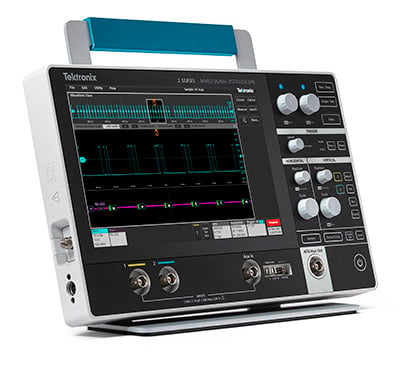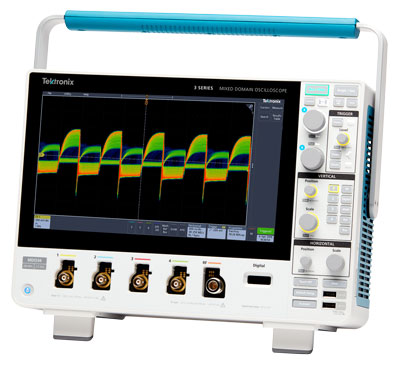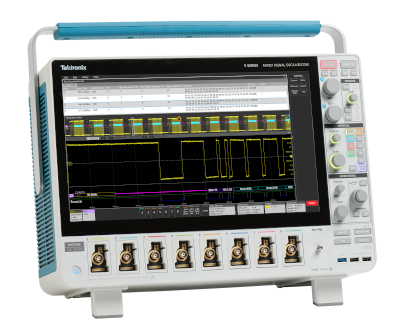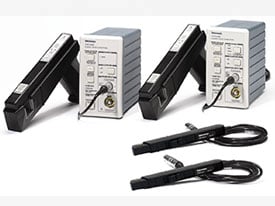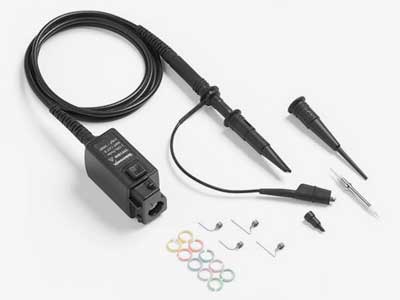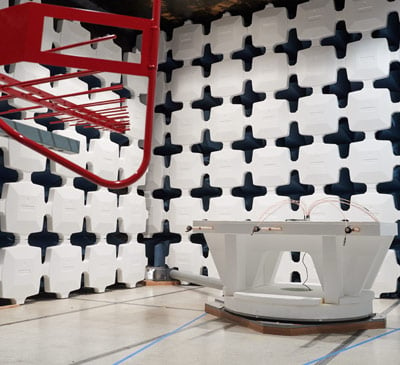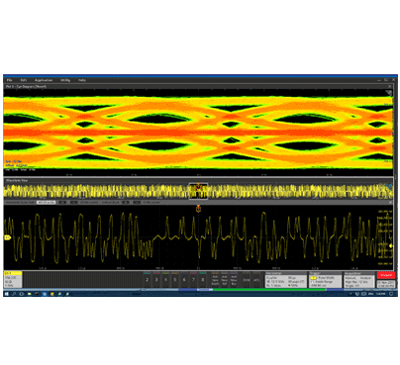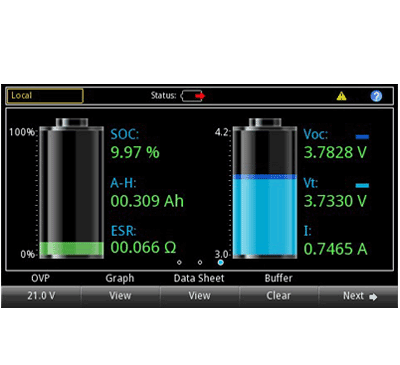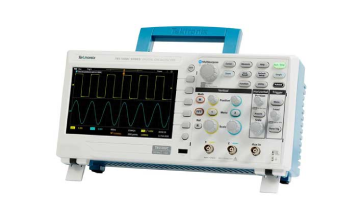
與我們聯絡
與 Tek 業務代表即時對談。 上班時間:上午 6:00 - 下午 4:30 (太平洋時間)
請致電
與 Tek 業務代表即時對談。 上班時間:上午 8:30 - 下午 5:30 (太平洋時間)
下載
下載手冊、產品規格表、軟體等等:
意見回饋
全新5系列 B MSO - 12 位元解析度、進階分析、多通道頻譜分析 - 瞭解更多
產品系列比較
 |
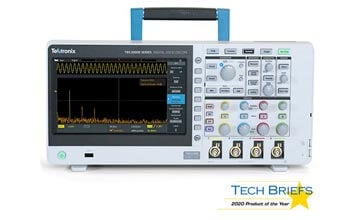 |
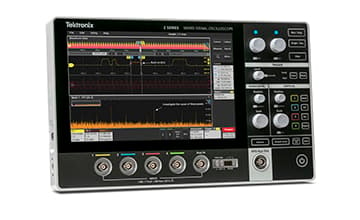 |
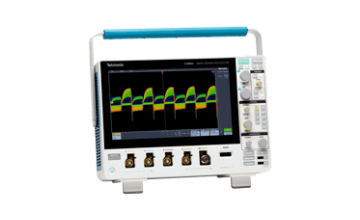 |
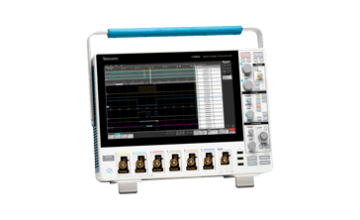 |
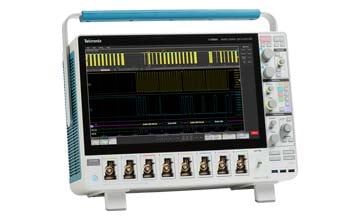 |
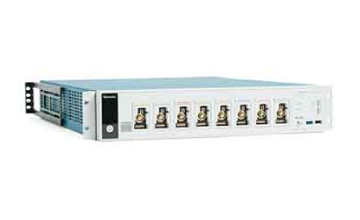 |
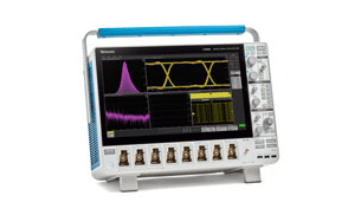 |
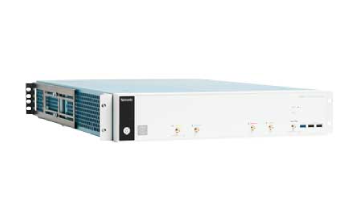 |
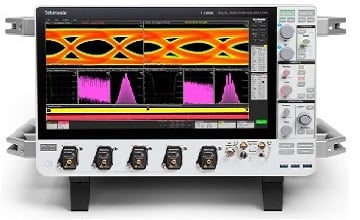 |
 |
 |
 |
 |
|
|
TBS1000C 數位儲存示波器
要求安排展示 |
TBS2000B 數位儲存示波器
要求安排展示 |
2 系列 MSO 可攜式混合訊號示波器
要求安排展示 |
3 系列 MDO 混合域示波器
要求安排展示 |
4 系列 B MSO 混合訊號示波器
要求安排展示 |
5 系列 B MSO
要求安排展示 |
5 系列 MSO 精巧型
要求安排展示 |
6 系列 B MSO
要求安排展示 |
6 系列精巧型數位器
要求安排展示 |
7 系列 DPO 數位螢光示波器
要求安排展示 |
MSO/DPO70000DX 混合訊號/數位螢光示波器
要求安排展示 |
DPO70000SX ATI 效能示波器
要求安排展示 |
MDO3000
要求安排展示 |
MDO4000
要求安排展示 |
|
| 頻寬 |
50 MHz - 200 MHz |
70 MHz - 200 MHz |
70 MHz - 500 MHz |
100 MHz - 1 GHz |
200 MHz 至 1.5 GHz |
350 MHz - 2 GHz |
1 GHz |
1 GHz - 10 GHz |
- |
8 GHz – 25 GHz |
8 GHz - 33 GHz |
13 GHz - 70 GHz |
100 MHz - 1 GHz |
200 MHz - 1 GHz |
| 類比通道 |
2 |
2-4 |
2 或 4 |
2 或 4 |
4 或 6 |
4、6 或 8 |
8 |
4、6 或 8 |
- |
4 |
4 |
1-4 |
2 或 4 |
4 |
| 數位通道 |
- |
- |
16 (選配) |
16 (選配) |
最高 48 個 (選配) |
最高 64 個 (選配) |
最高 64 個 (選配) |
最高 64 個 (選配) |
- |
- |
16 (選配) |
- |
16 (選配) |
16 (選配) |
| 取樣率 |
1GS/s |
1 GS/s 至 2 GS/s |
1.25 GS/s 全通道;2.5 GS/s 半通道 |
2.5 GS/s - 5 GS/s |
6.25 GS/s |
6.25 GS/s |
6.25 GS/s |
50 GS/s |
- |
125 GS/s |
25 GS/s - 100 GS/s |
50 GS/s - 200 GS/s |
2.5 GS/s - 5 GS/s |
2.5 GS/s - 5 GS/s |
| 記錄長度 |
20K 點 |
5M 點 |
100 Mpts |
10 M |
31.25 M 至 62.5 M |
62.5 M - 500 M |
125 M - 500 M |
62.5 M - 1 G |
- |
500M - 2G 點 |
31.25M - 1G 點 |
62.5M - 1G 點 |
10 M |
20 M |
| 頻譜分析儀 |
標準數學 FFT |
標準數學 FFT |
標準數學 FFT |
內建高達 3 GHz 的專用射頻路徑 (選配) |
採用整合式數位降頻器的頻譜檢視;每個通道都有 312.5 MHz 頻距、500M 頻距 (選用) |
採用整合式數位降頻器的頻譜檢視;每個通道都有 312.5 MHz 頻距標準、500 MHz 頻距 (選用) |
採用整合式數位降頻器的頻譜檢視;每個通道都有 312.5 MHz 頻距標準、500 MHz 頻距選用的標準數學 FFT |
採用整合式數位降頻器的頻譜檢視;每個通道都有 1.25 GHz 頻距標準、2 GHz 頻距 (選用) |
- |
SignalVu-PC 向量訊號分析應用程式,內建數位降頻器,支援多種調變格式、測量和顯示。 |
標準數學 FFT |
標準數學 FFT |
內建高達 3 GHz 的專用射頻路徑 |
內建高達 6 GHz 的專用射頻路徑 |
| 函數產生器輸出 |
- |
- |
1 (選配,使用輔助輸出的多工功能) |
1 (選配) |
1 (選配) |
1 (選配) |
1 (選配) |
1 (選配) |
- |
1 (選配) |
- |
- |
1 (選配) |
1 (選配) |
| 最大波形擷取率 |
- |
每秒 10,000 次 |
- |
>280,000 個波形/秒 |
>500,000 個波形/秒 |
>500,000 個波形/秒 |
>500,000 個波形/秒 |
>500,000 (峰值檢測、包封擷取模式), |
- |
未來版本 |
>300,000 個波形/秒 |
>300,000 個波形/秒 |
>235,000 - >280,000 個波形/秒 |
>270,000 - >340,000 wfm/s |
| 射頻通道 |
- |
- |
- |
1 (選配) |
- |
- |
- |
- |
- |
- |
- |
- |
1 |
1 |
| 射頻頻率範圍 |
- |
- |
- |
9 kHz 至 1 GHz 或 3 GHz (選配) |
頻譜檢視直流至示波器頻寬 (-3dB) |
頻譜檢視直流至示波器頻寬 (-3dB) |
頻譜檢視直流至示波器頻寬 (-3dB) |
頻譜檢視直流至示波器頻寬 (-3dB) |
- |
SignalVu-PC DC 至示波器頻寬(-3dB) |
- |
- |
9 kHz - 1 GHz |
9 kHz – 3 GHz/ 6 GHz (選配) |
| 觸發類型 |
邊緣、脈波寬度、矮波、線電源 |
邊緣、脈波寬度、矮波 |
邊緣、脈波寬度、逾時、矮波、邏輯、設定/保持、上升/下降、並列、串列匯流排 (選配) |
邊緣 |
邊緣 |
邊緣 |
邊緣 |
邊緣 |
- |
邊緣 |
通訊,匯流排,I2C,SPI,CAN,LIN,Flexray,RS-232/422/485/UART,USB,邊緣,B 事件掃描,突波,碼型,矮波,串列樣式,設定/約束,狀態,逾時,轉換,視覺,寬度,視窗 |
邊緣,B 事件掃描、突波、碼型、矮波、設定/保持、狀態、逾時、轉換、視覺、寬度、視窗 |
邊緣 |
邊緣 |
| 選配分析 |
- |
- |
I2C、SPI、RS-232/422/485/UART、CAN、CAN FD、 LIN、SENT 解碼 |
I²C/SPI 解碼 |
1-Wire 解碼 |
1-Wire 解碼 |
1-Wire 解碼 |
1-Wire 解碼 |
- |
1-Wire 解碼 |
MIPI® D-PHY 測試 (D-PHY),DDR 記憶體匯流排分析 (DDRA),DPOJET 抖動和眼圖分析 (DJA),DisplayPort 1.2 來源測試自動化 (DP12),乙太網路相容性測試解決方案 (ET3),HDMI 相容性測試解決方案 (HT3),HSIC 電子驗證和通訊協定解碼 (HSIC),MHL 進階分析和相容性測試 (MHD),MOST 電子相容性和除錯 (MOST),MIPI M-PHY 發射器除錯、特性分析和相容性測試 (M-PHY),PCI Express 發射器相容性和除錯 (PCE3),SAS 12 Gb/秒 測試 (SAS3),串列資料連結分析解決方案軟體 (SLE、SLA),SFP 相容性和除錯 (SFP-TX),SignalVu 向量訊號分析軟體 (SVE),Thunderbolt TX 相容性測試 (TBT-TX),USB 2.0 相容性測試解決方案 (USB),USB 3.0 發射器測試 (USB3) |
DPOJET 抖動和眼圖分析 (DJA)、串列資料連結分析可視化工具 (SDLA64)、SignalVu 向量訊號分析 (SVE) |
CAN/LIN 解碼 |
CAN/LIN 解碼 |
| 垂直準確度 |
- |
3% |
±2.0% |
±1.5% |
±1% |
±1% |
±1% |
±1% |
- |
±1% |
±2% |
±2% |
±1.5% |
±1.5% |
| 自動量測 |
32 |
32 種功能,與可供完整波形分析的 FFT 功能 |
36 |
- |
- |
- |
- |
- |
- |
- |
53 |
53 |
- |
- |
| 應用模組的數量範圍 |
- |
- |
- |
- |
- |
- |
- |
- |
- |
- |
- |
- |
- |
- |
| 上升時間 |
7.0 ns - 2.1 ns |
3.5ns~5ns |
5 ns 至 950 ps (70MHz 至 500MHz) |
4000 ps 至 400 ps (100 MHz 至 1 GHz) |
2.3 ns 至 450 ps (200 MHz 至 1.5 GHz) |
175 ps - 1 ns |
350 ps |
400 ps - 40 ps (1 GHz - 10 GHz) |
- |
50 ps - 16 ps (8 GHz - 25 GHz) |
9 ps - 98 ps |
<6ps - 13ps |
400 ps - 4 ns |
175 ps - 3.5 ns |
| 顯示器 |
7 吋 (178 公釐) WVGA 彩色螢幕 |
9 吋 TFT WVGA |
10.1 吋,1280 x 800 |
11.6 吋、1920 x 1080 HD |
13.3 吋、1920x1080 HD |
15.6 吋、1920x1080 HD |
- |
15.6 吋、1920x1080 HD |
- |
15.6 吋、1920x1080 HD |
12.1 吋 (308 公釐),彩色 |
6.5 吋 (165 公釐),彩色 |
9 吋 (229 公釐),彩色 |
10.4 吋 (264 公釐),彩色 |
| 保固 |
五年保固 |
5 年 |
1 年 |
3 年 |
3 年 |
1 年 |
3 年 |
1 年 |
- |
1 年 |
一年保固 |
一年保固 |
3 年 |
3 年 |
| SA 即時擷取頻寬 |
- |
- |
- |
1 GHz (選配)、3 GHz (選配) |
頻譜檢視:312.5 MHz、500 MHz (選配) |
頻譜檢視:312.5 MHz、500 MHz (選配) |
頻譜檢視:312.5 MHz、500 MHz (選配) |
頻譜檢視:1.25 GHz、2 GHz (選配) |
- |
- |
- |
- |
最高 3 GHz |
最高 3.75 GHz |
| 起價 | US $482 | US $1,750 | US $2,040 | US $4,920 | US $10,300 | US $22,400 | Contact Us | US $41,400 | Contact Us | US $165,000 | Contact Us | Contact Us | US $8,490 | Contact Us |
示波器探棒和配件
Tektronix 探棒和配件組合提供廣泛的選擇,全都可與我們領先業界的示波器完美配對。 您可從 100 多種選項中針對特定測試應用選擇需要的探棒。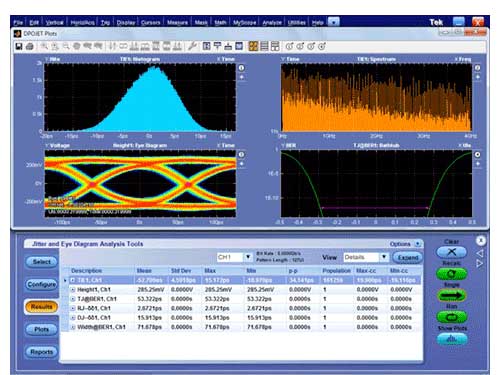
適用於示波器的分析軟體
使用 Tektronix 軟體,針對最具挑戰性的系統設計將測試自動化、簡化執行方式,並且加快評估速度。深入瞭解本公司的示波器軟體套件。

Keithley Kickstart 軟體
無需複雜的程式設計,即可在數分鐘內啟動量測。執行 I-V 特性分析和其他作業。
探索我們的示波器。從日常桌上型示波器到即時高效能示波器。
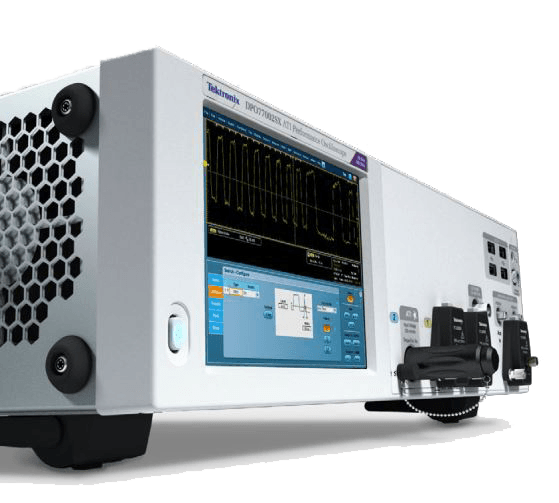
學習中心
瞭解如何使用示波器、頻譜分析儀、電源量測裝置和其他儀器來對系統異常進行疑難排解,提供量測見解和除錯 EMI 等。示波器常見問答集
示波器有什麼用途?
工程師使用示波器來設計、製造或維修電子設備, 驗證設備是否運作正常。
示波器如何運作?
示波器 使用三種系統 (垂直、水平和觸發) 重建電子訊號, 這些系統會共同收集電子訊號的相關資訊, 讓示波器能以圖形方式顯示這些訊號。
示波器如何量測電壓?
示波器會使用感測器 來擷取振動或溫度等物理現象, 或是電流或電源等電氣現象,藉此量測電壓波。 接著,示波器會將該訊號轉換成波形並以圖形方式顯示, 其中水平軸表示時間,垂直軸表示電壓。
示波器如何量測頻率?
大多數示波器會自動量測頻率, 但您也可以在示波器上使用簡單的方程式 (頻率 = 1/週期) 和水平刻度 來手動量測頻率。
示波器如何量測電流?
您可以使用示波器量測電流, 方法為量測分流電阻器兩端的壓降或 使用電流探棒。
示波器有哪些不同類型?
示波器的類型主要有兩種: 類比和數位。現在大多數工程師使用的數位示波器 分為五類:數位儲存示波器、數位螢光示波器、 混合訊號示波器、混合域示波器,以及數位取樣示波器。
什麼是混合訊號示波器?
混合訊號示波器是數位儲存示波器的一種, 旨在擷取、顯示和比較 類比訊號和數位訊號。
什麼是混合域示波器?
如同混合訊號示波器,混合域示波器 用來量測類比和數位訊號,但具有內建頻譜分析儀, 讓工程師也能進行 射頻 (RF) 量測。
誰會使用示波器?
科學家、工程師、物理學家、醫療研究員、汽車技師、維修技師和 教育工作者都可使用示波器觀察訊號隨時間的變化。這款功能強大的儀器 應用範圍廣泛。
一台示波器多少錢?
示波器的價差很大,具體價格將取決於您是僅需要簡單設定的業餘人士, 還是在實驗室環境中使用示波器的電氣工程師。示波器的 配置、頻寬和通道數量將會 顯著左右示波器的價格。舉例來說,Tektronix 示波器當中,價格 最低約 500 美元起,但適用於精密儀器和進階配置的示波器,最高可達到數萬美元不等。如需相關指引,以找到最符合您需求的示波器,請聯絡 Tektronix 的專家。
如何判定示波器價格?
由於我們示波器的配置自由度極高,因此每台示波器的價格可能各不相同。若希望瞭解 示波器的確切價格以及任何正在進行中的促銷活動,請填寫報價申請表, 業務代表將會與您聯絡,根據您的配置和需求 判定示波器價格。

「我們找不到能夠進行量測的設備,例如高端閘源極電壓。事實上,在現今存在更高頻率共模電壓的情況下,多數差動訊號皆無法精確量測。此時便是 Tektronix 登場的時候。」
摩德納雷焦艾米利亞大學 (UniMoRe) 的 Giovanni Franceschini 教授


